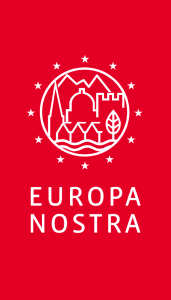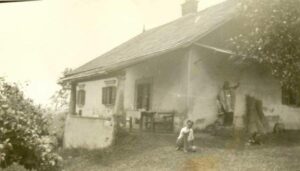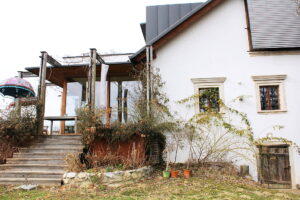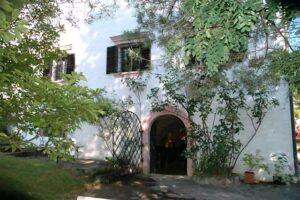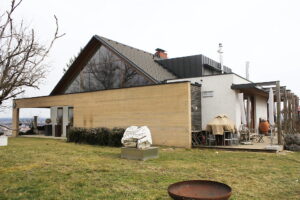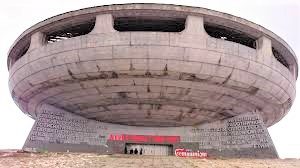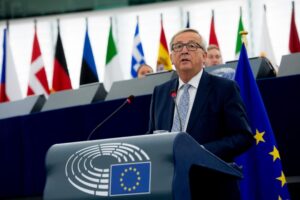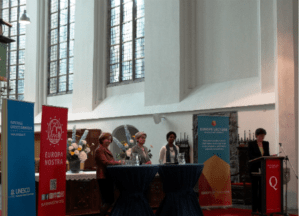From: Lorena Aldana-Ortega <lao@europanostra.org>
Sent: 09 April 2020 18:36
Cc: Sneška Quaedvlieg – Mihailovic <sqm@europanostra.org>
Subject: IMPORTANT MESSAGE TO ALL EUROPA NOSTRA MEMBERS: COVID-19 Pandemic and its impact on the heritage world
Dear Members of the Europa Nostra Family,
On behalf of Sneška Quaedvlieg – Mihailovic, Secretary General of Europa Nostra, and of the whole Europa Nostra team, I would like to warmly thank you for your positive response to our Consultation on the impacts of the COVID-19 Pandemic on the heritage world, which we sent to you on March 26 (see message here).
We are truly grateful for the numerous and meaningful replies that so many of you have already provided. In the following weeks, we shall carefully analyse all the received information to prepare and widely disseminate a comprehensive overview and estimate of the current situation. As already announced, your input will help us design and implement an adequate Europa Nostra Joint Advocacy Action with regard to the impacts of the COVID-19 on the heritage world towards the European Union, its Member States and other relevant international, European and national bodies.
In the meantime, if you haven’t done so already, we urge you to reply to the short questionnaire attached (ANNEX 1) at your convenience and if possible by next Thursday 16 April. The more information we obtain from our members and partners about the situation on the ground, the more representative and meaningful our analysis will be and the more effective our advocacy action will be.
From our side, we are committed to continuing our short and medium-term advocacy efforts towards EU leaders to make sure that cultural heritage is duly included in the EU’s immediate response to the crisis as well as in long-term recovery plans.
We therefore take this opportunity to share with you some updates on our work on this front, below.
Latest Europa Nostra advocacy efforts in relation to COVID-19
Yesterday, all 27 EU Member States’ Ministers in charge of Culture held a video-conference to discuss the impact of COVID-19 on Europe’s cultural, creative and heritage sectors, under the chairmanship of the Croatian Minister of Culture, Nina Obuljen Koržinek, in representation of the Croatian Presidency of the EU. Ahead of this video-conference, Europa Nostra has addressed a letter to the Croatian Minister of Culture and acting chair of the EU Council of Ministers, which you can find attached for information. In this letter, we call on EU leaders for urgent support measures for the heritage sector, and to duly include culture and heritage in the EU’s immediate crisis response and long-term recovery plans. Our Secretary General also had a conference call with Minister Obuljen, who has assured us that our letter was circulated to all Ministers and that she and her colleagues looked forward to receiving further input from us.
We are also happy to share with you below a short recap of yesterday’s video-conference among EU Ministers of culture.
Video-conference (informal meeting) among EU Ministers of culture on 8 April
- Video-conference organised on the initiative of the Croatian Presidency of the EU and chaired by Nina Obuljen.
- All27 EU Member States
- European Commission Representatives who joined the meeting were: Věra Jourová(European Commission Vice President for Values and Transparency), Mariya Gabriel( European Commissioner for Innovation, Research, Culture, Education and Youth) and Thierry Breton (European Commissioner for the Internal Market).
- Ministers and representatives of the European Commision exchanged views on the immediate/ initial measuresimplemented to mitigate impacts of the crisis and measures that should be taken at the European level.
- The Press Conferencethat followed the video-conference is accessible here,in case you are interested. Here you can read a short press release.
The key points discussed were:
- All EU Member States have undertaken necessary steps to help artists, cultural workers, cultural institutions and companies in the crisis.
- Most Member States agreed that cultural and creative sectors are among the first (if not THE first) to be severely hit by the crisis and lockdown of public spaces.
- Member States expressed their concerns as of how quickly some parts of the cultural sector will be able to recover once the immediate crisis is over.
- The digital consumption of cultural content on various online platforms during the isolation was also addressed and praised.
- Member States presented national measures, which are different and context-specific, but can be grouped as follows:
- Majority of Member States have implementedSOCIAL MEASURESto protect the most vulnerable workers: freelancers, independent, small enterprises.
- OPERATIONAL MEASURES: Extended deadlines and changed criteria of deadlines of national calls to adapt to the situation.
- FINANCIAL MEASURES: a number of countries made available funds for cultural and creative sectors
- The Media and the importance of the professional work of journalists to prevent fake news and disinformation was also addressed.
- Commissioner Mariya Gabriel presented activities already launched by European Commission, both horizontal and sectorial.
- 3 horizontal measures that can and should be used for the cultural sector:
- Coronavirus response investment initiative(37 billion Euro from Structural Funds to alleviate the effects of the pandemic)
- New instrument for temporary support to mitigate unemployment risk in emergencies (100 billion Euro)
- Temporary framework for state aid(culture is specifically listed as one of the sectors that are most severely hit).
- Sector-specific actions (under the Creative Europe framework programme of the EU):
- Maximum flexibility for ongoing and planned actions (including extension of Deadline for application to some calls published under the programme)
- Special measures to support cinema ( 5 million Euro as part of a supplementary fund)
- Redirecting the work of the cross-border dimension of performing arts towardsvirtual mobility and digital culture. In May, a Fund of 2 million Euro for this purpose will be announced.
- Commissioner Gabriel also proposed to launch 2 platforms: one for Member States to share good practices and another one for the sector itself (to exchange and find solutions to the challenges posed by the crisis)
- In general, Ministries appreciated the measures already taken by the European Commission as well as the ‚quick response‘ to address the current crisis.
- Next steps:
- EU Ministers in charge of Culture will continue to be in close contact and cooperation in the coming weeks, as to prepare a Ministerial meeting on this topic in May 2020. In this Ministerial meeting, EU Ministers in charge of Culture should make a solid assessment of the crisis, propose Joint action for the post-crisis period as well as options for recovery of the cultural and creative sectors.
- 3 horizontal measures that can and should be used for the cultural sector:
We hope you will find this recap useful. We very much look forward to receiving your input and we are deeply grateful for your most valuable support on this ambitious but vital endeavor.
Wishing you a Happy Easter Break.
On behalf on the Europa Nostra Team,
Lorena Aldana
European Policy Coordinator
EUROPA NOSTRA | lao@europanostra.+32 (0) 2486 25 26
| europanostra.org | twitter.com/europanostra | facebook.com/europanostra

